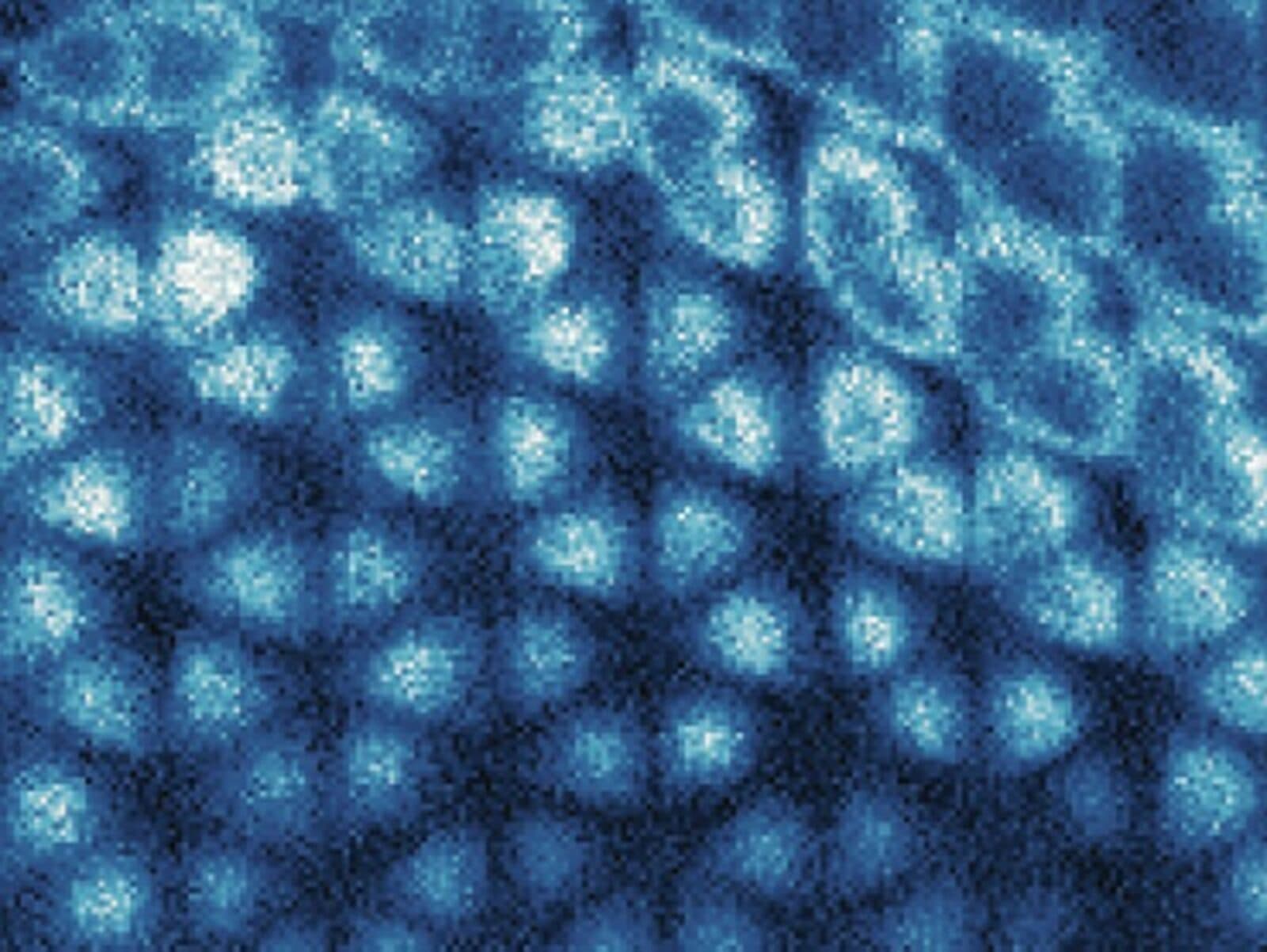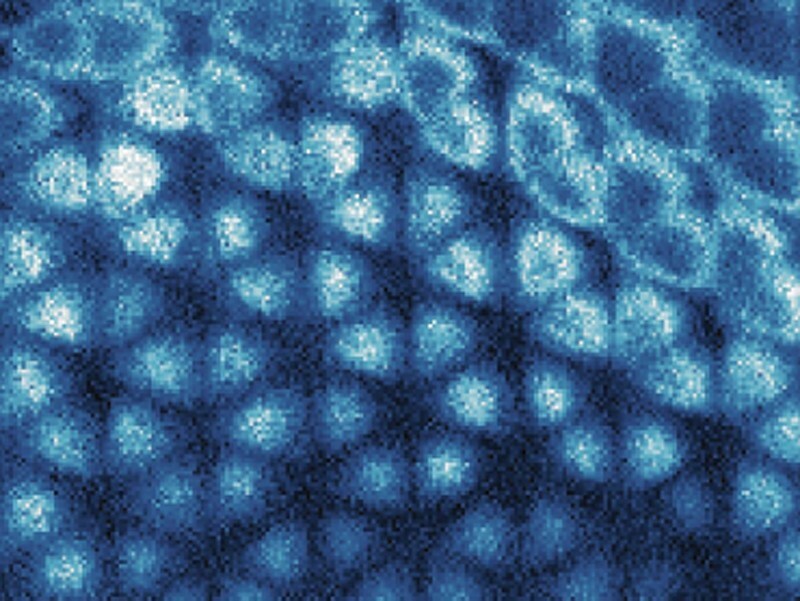Bright Ideas
by Alan S. Brown
Wigner crystals, acoustic biosensors, accelerators, and more from Kavli Nanoscience Institutes

The Author
It has been quite a month for Kavli researchers. TU Delft’s Lieven Vandersypen became the second Kavli researcher in two years to win The Netherland’s most prestigious science award, the Spinoza Prize. At Caltech, Mikhail Shapiro was chosen a Hughes Medical Institute Investigator, which comes with a $9 million research stipend. Meanwhile, Cornell scored with two research centers. It received a $25 million grant to found the Center for Research on Programmable Plant Systems, led by Abraham Strook, to apply digital technology to crop research. It also received $22.3 million to renew the Center for Bright Beams, where David Muller is director of knowledge transfer, to advance accelerator technology.
Freeze frame
Physicists led by Feng Wang, a member of the Kavli Energy NanoScience Institute at UC Berkeley, has taken the first image ever of elusive “Wigner crystals” made of electrons. While the subject might be a bit obscure, the method could open the door to imaging all sorts of physical phenomena. Wigner crystals are honeycomb-like patterns of electrons that form within a solid. They occur when temperatures drop close to absolute zero. This slows down electrons so that the repulsion between their negative charges freezes them into a honeycomb arrangement that minimizes their total energy. Wang did this by trapping them between atomically thin layers of tungsten disulfide and tungsten diselenide. If he had tried to image them at this point, the voltage generated by his scanning tunneling microscope (STM) would have blow the fragile honeycomb apart. Instead, Wang applied a graphene layer over the top. The Wigner crystal altered the graphene’s structure just enough for the STM to see the arrangement of the underlying Wigner electrons.

Vandersypen wins Spinoza Prize
Lieven Vandersypen, member and former director of the Kavli Institute of Nanoscience Delft, has been awarded The Netherland’s highest science award, the Spinoza Prize. As a graduate student, Vandersypen was the first to use the spin of atomic nuclei in molecules to create a quantum bit, or qubit, the building block of quantum computers. He then built a quantum processor of seven qubits that could factor the number 15 into 3 and 5, an early practical demonstration of quantum computing. At Delft, he was the first to use magnetic and electric fields to manipulate electron spins in quantum dots, nanoscale semiconductors that are small enough to be governed by the laws of quantum mechanics. Vandersypen is also director of research at QuTech, a major center of quantum computing research.
Hearing proteins
Mikhail Shapiro, a chemical engineer and member of the Kavli Nanoscience Institute at Caltech, has been selected as a The Howard Hughes Medical Institute Investigator. The honor comes with a $9 million stipend to fund his research over the next seven years. Shapiro focuses on genetically modified proteins that act as acoustic biosensors that enable him to image cells (and their behavior) deep in living tissues. The sensors solve a key problem with conventional fluorescent imaging proteins (also made by genetically modifying genes), which are the most common way to image what happens in cells. They work well—as long as they remain near the surface, where light can penetrate. Shapiro’s acoustic reporter genes give off an acoustic signature when struck by ultrasound waves that enables him to follow their activity even deep within tissues.
Listening to plants
The National Science Foundation will spend $25 million over five years to fund the new transdisciplinary Center for Research on Programmable Plant Systems. It seeks to improve plant growth by using digital technology to remotely sense a plant’s biology and how it responds to its immediate ecosystem. One set of tools, developed by Abraham Stroock, the center’s co-director and a member of the Kavli Institute at Cornell for Nanoscale Science, uses color changes in nanogel spheres to measure water use in leaves. Another, from Margaret Frank, uses fluorescence to study how tomato roots communicate with leaves. By better understanding the mechanisms behind plant behavior, researchers hope to breed plants that can respond better in changing environments in which they did not evolve.
Bright idea
There are roughly 30,000 industrial and medical accelerators in use today, but only one interdisciplinary center whose research seeks to improve their brightness and affordability. That is the Center for Bright Beams at Cornell. It opened in 2016 with a $23 million National Science Foundation grant to advance accelerator technologies through condensed matter physics, materials science, and surface science. NSF recently re-upped its commitment to the center, funding it with $22.5 million for the next five years. Brightness is a key factor in improving resolution when studying biology and materials as well as shrinking the features of integrated circuits. Since 2016, the center’s research has developed an electron source with ten times smaller size and divergence than existing technologies, as well as simpler beam accelerators for the large systems that could potentially cut costs by billions of dollars. David Muller, the co-chair of the Kavli Institute at Cornell, is the center’s director of knowledge transfer.